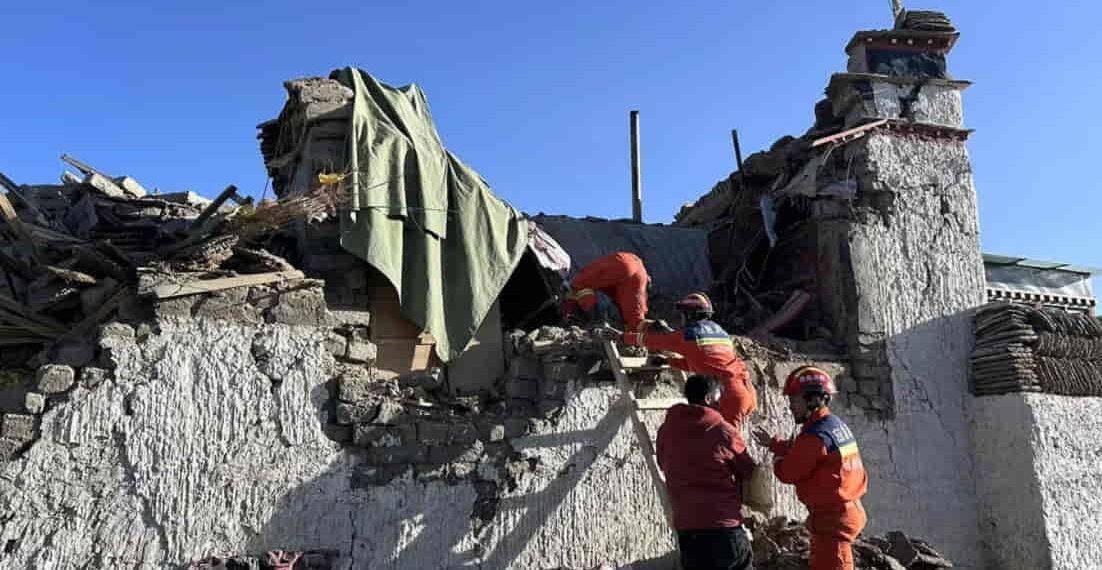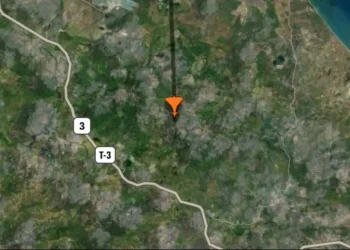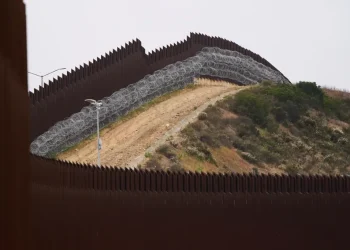Powerful Earthquake Strikes Tibet, Nepal: Over 120 Dead, Widespread Damage
A devastating 7.1-magnitude earthquake struck a remote region of Tibet on Tuesday morning, killing at least 126 people and injuring 188 others, according to state broadcaster China Central Television (CCTV). The quake’s tremors were felt across the Himalayas, reaching Nepal, Bhutan, and parts of northern India.
Epicenter and Impact
The earthquake, recorded at 9:05 a.m. local time, originated at a depth of 10 kilometers (6.2 miles) in Tingri County, high on the Tibetan Plateau near the Nepalese border, about 50 miles north of Mount Everest. The tremors toppled houses, damaged infrastructure, and sent shockwaves through:
- Himalayan villages: Over 3,600 houses were damaged in the sparsely populated region. Approximately 6,900 people live in 27 isolated villages within a 20-kilometer (12-mile) radius of the epicenter.
- Shigatse, a major Tibetan city with 800,000 residents, felt the quake but reported no major structural damage.
- Kathmandu, Nepal’s capital: Residents rushed outdoors as power lines shook and tremors revived memories of the 2015 earthquake that claimed 9,000 lives.
Aftershocks and Continued Threat
The China Earthquake Networks Center recorded 150 aftershocks by Tuesday evening, with 19 registering magnitudes above 3.0. These aftershocks continue to rattle the affected areas, further complicating rescue and recovery efforts.
Human Stories and Destruction
Residents shared harrowing experiences:
- Pu Chi, 24, from Bainang County (125 miles from the epicenter), described waking to shaking walls and a swaying ceiling light. “I ran outside in fear and called my family,” she said.
- Anna Guo, an 18-year-old tourist, was queuing to visit Mount Everest when the quake struck. “The windows shook violently. I’ve never experienced anything like it.”
Tremors Across Borders
The earthquake extended its reach into neighboring countries:
- In Nepal, tremors caused panic in the Solukhumbu district near Mount Everest, where residents described “everything shaking.” 13 injured individuals were rescued, and 10 houses were reported damaged.
- At a yak farm near Nepal’s Everest base camp, workers described widespread fear as structures swayed.
Rescue and Relief Efforts
China has mobilized a large-scale rescue operation:
- Military Deployment: Over 200 Chinese soldiers were sent to Tingri County, with 1,500 more on standby.
- Rescue Teams: Footage showed rescuers, including immigration officers, digging through rubble with bare hands in villages where homes had collapsed.
- Supplies Distributed: Thousands of tents, beds, and coats were dispatched to affected areas, where temperatures are expected to plunge below -18°C (-0°F).
Nepali officials and humanitarian organizations have also begun recovery efforts, focusing on aiding injured individuals and assessing structural damages.
Leaders Respond
Chinese President Xi Jinping called for an all-out rescue effort, urging officials to prioritize survivors’ safety and warmth in freezing conditions. The Dalai Lama, exiled in India, expressed his condolences, stating, “I am deeply saddened and offer prayers for those who lost their lives.”
Tibetan Context
The earthquake’s devastation highlights the vulnerability of Tibet’s remote and restricted regions. With its sparse population and rugged terrain, access for rescue teams is challenging. Tibet remains a politically sensitive area under Beijing’s tight control, with limited access for foreign visitors.
Mount Everest Base Camp and Tourism
In the aftermath of the quake, local authorities closed the Mount Everest base camp and its surrounding scenic areas. Although winter is not a peak season for climbing, the region remains a tourist hotspot for its breathtaking views.
Outlook
The earthquake has left a trail of destruction across Tibet and neighboring regions. With plummeting temperatures and ongoing aftershocks, rescue teams face immense challenges in providing relief and ensuring the safety of residents. For many, the tragedy serves as a stark reminder of the region’s seismic vulnerability.
This article was rewritten by JournosNews.com based on verified reporting from trusted sources. The content has been independently reviewed, fact-checked, and edited for accuracy, neutrality, tone, and global readability in accordance with Google News and AdSense standards.
All opinions, quotes, or statements from contributors, experts, or sourced organizations do not necessarily reflect the views of JournosNews.com. JournosNews.com maintains full editorial independence from any external funders, sponsors, or organizations.
Stay informed with JournosNews.com — your trusted source for verified global reporting and in-depth analysis. Follow us on Google News, BlueSky, and X for real-time updates.














